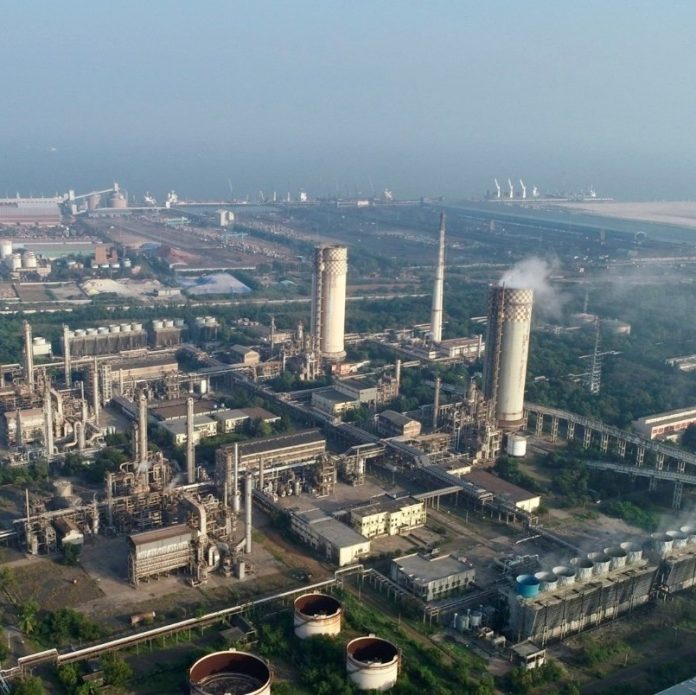AM Green Kakinada Cluster has joined the World Economic Forum’s (WEF) “Transitioning Industrial Clusters Initiative” aimed improving collaboration and develop a shared vision among co-located companies and public institutions with the goals of driving economic growth, employment and reducing CO2e emissions.
By joining the WEF Transitioning Industrial Clusters initiative, AM Green Kakinada Cluster aims to send out a strong message on the importance of a collective approach towards global industrial decarbonisation and create an integrated green industrial ecosystem that will maximize economic, social and environment outcomes in India.
With over $3 billion initial investment, the cluster is expected to create over 10,000 direct and indirect jobs, boosting local and national economies, while supporting industries like construction, equipment manufacturing, and housing.
Making the announcement AM Green, Chairman, Mr. Anil Chalamalasetty said “Global Decarbonisation Solutions at Scale and Speed are the need of the day to bring in the new vision of global energy transition to life. We believe that this is a wonderful opportunity and a challenge that we have been working tirelessly for over the past many years.”
“We look forward to engaging with the WEF initiative and to fulfilling the Cluster Transition Goals. Additionally, as a member of the Transitioning Industrial Cluster Initiative, AM Green Kakinada Cluster will aim to support global work on decarbonisation clusters and look to share its knowledge and development work with the Forum and imbibe the best practices from other forum clusters” Mr. Chalamalasetty added.
“We are pleased to welcome the AM Green Kakinada Cluster to our global network of 25 industrial clusters, marking an important step for India’s energy transition. With Andhra Pradesh’s renewable resources, the Kakinada Cluster has the potential to advance green ammonia and hydrogen production regionally. As part of the Transitioning Industrial Clusters community, AM Green Kakinada will have the opportunity to share insights and contribute to the collective progress in industrial decarbonization,” said Mr Roberto Bocca, Head of the Centre for Energy and Materials and Member of the Executive Committee at the World Economic Forum.
Overall ~$15 billion of upstream ecosystem investments are part of the functions of Kakinada cluster. Furthermore, the projected emissions at the commencement of cluster operations in 2026 are 0 Mt CO2e.
Starting with a production capacity of 1 MTPA of Green ammonia, the Kakinada cluster will also include a 2 GW electrolyser manufacturing plant, and other green molecule production facilities ensuring a robust supply chain for equipment.
The cluster will be powered by 24/7 Carbon-Free Energy enabled through pumped storage projects and offer integrated utilities like green steam, desalinated water, and effluent treatment facilities.
AM Green aims to provide global industrial decarbonisation solutions through this key Green Industrial Cluster in Kakinada, Andhra Pradesh, positioning India as a key player in global decarbonisation and energy transition efforts. The cluster will be a Zero Emission facility producing essential green molecules for energy transition, including green ammonia, green hydrogen, sustainable aviation fuel, green olefins, and more.
AM Green aims to provide global industrial decarbonisation solutions through this key Green Industrial Cluster in Kakinada, Andhra Pradesh, positioning India as a key player in global decarbonisation and energy transition efforts. The cluster will be a Zero Emission facility producing essential green molecules for energy transition, including green ammonia, green hydrogen, sustainable aviation fuel, green olefins, and more.
AM Green is developing one of the world’s largest green ammonia platforms, achieving 5 million tons per year by 2030, supporting its efforts to achieve net zero targets both in India and OECD markets. This output will be equivalent to approximately 1 MTPA of green hydrogen, accounting for one-fifth of India’s target for green hydrogen production under the National Green Hydrogen Mission and 10 percent of Europe’s target for green hydrogen imports. AM Green is developing production capabilities for other green molecules like green caustic soda, e-methanol, olefins & biofuels for decarbonisation in hard-to-abate industries.
To read more about Biomass Industry News continue reading Bioenergytimes.com














